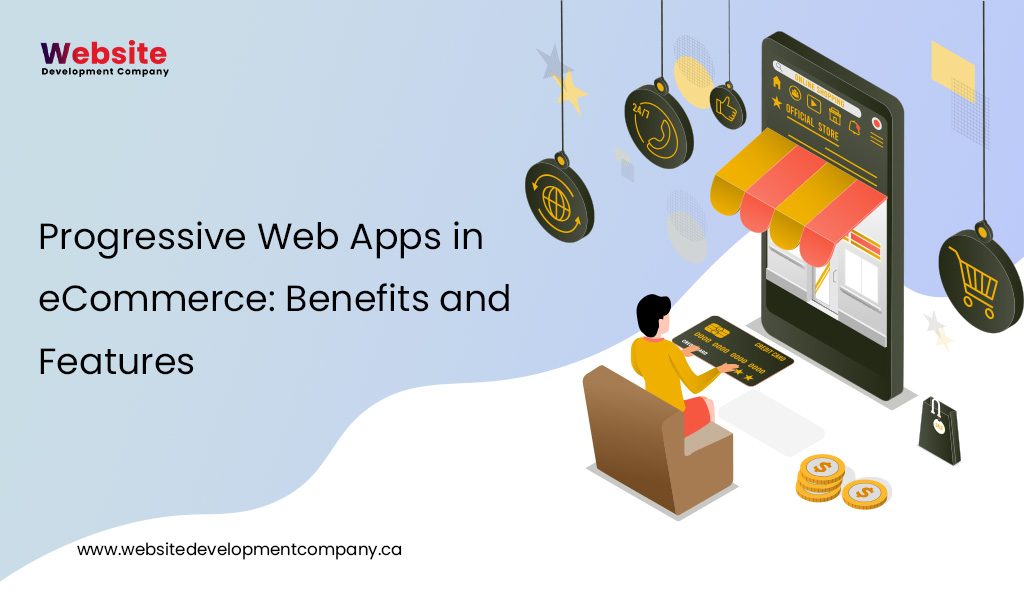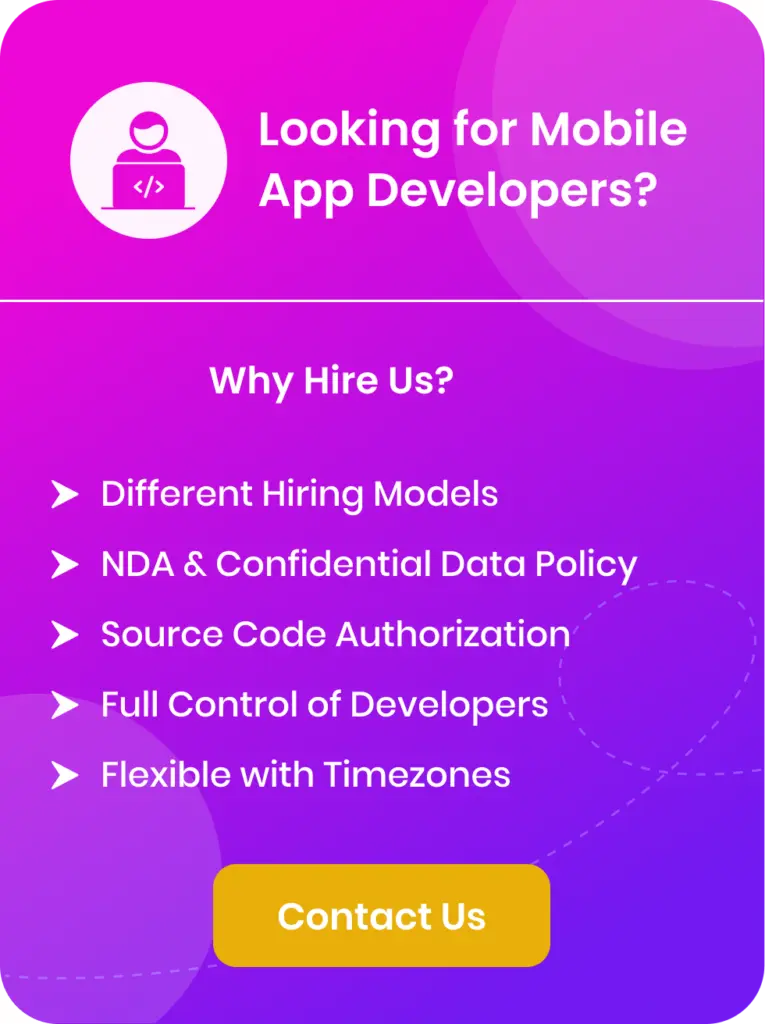In the current fast-paced digital age eCommerce has become a fundamental element of our lives. With the ease of shopping online, shoppers want seamless and interactive experience when visiting eCommerce sites. This is the point at which Progressive Web Apps (PWAs) can help. PWAs are revolutionizing the industry of eCommerce by providing a fresh way to provide exceptional user experiences by bridging the gap between web-based and native mobile apps. In this complete guide, we’ll look at the features of PWAs, what they offer, their capabilities and the benefits they offer in eCommerce development. eCommerce sector.
Understanding Progressive Web Apps (PWAs)
Progressive Web Apps are a kind of web-based application that utilizes the latest technologies for web to provide an experience that is reminiscent of native apps to users via web browsers. They were first introduced by Google in the year 2015, but have gained popularity because of their ability to bring together the best aspects of mobile and web apps.
Key Features of PWAs
PWAs are distinguished by a number of essential attributes that differentiate them from other web development.
1. Resilient Design:
The PWAs have been designed so that they are flexible, ensuring that they are able to adapt easily to different sizes of screens and types of devices. This ensures an identical user experience across all devices, including desktops, smartphones, tablets and desktops.
2. App-Like Interface:
PWAs offer an app-like interface, with smooth animations, seamless transitions and gestures, resulting in an engaging and immersive user experience.
3. Offline Function:
One of the most notable advantages in PWAs is their capability to function offline, or even in poor network conditions. They can store important resources that allow users to access their content and perform transactions even when they’re offline and not linked to the internet.
4. Fast loading:
PWAs are optimized to speed up loading. They load fast, which reduces bounce rates and ensures users don’t need to wait around for websites to be loaded.
5. Push Notifications:
The PWAs can send push notifications to users, which allows businesses to keep users engaged by sending them personalized messages, offers and updates even when they’re not actively using the application.
6. Secure:
Web pages are delivered via HTTPS, which ensures the privacy of data and security. This is important for eCommerce sites that handle sensitive customer data.
7. They:
can be discovered via search engines, making it much easier for users to locate and gain access to them without having to install an application through an application store.
8. Install-Free:
In contrast to traditional mobile apps, PWAs don’t need users to download and install them through app stores. Users can integrate them into their home screens by one tap, thereby conserving storage space and eliminating any friction during the process of onboarding.
Benefits of PWAs in eCommerce
After we’ve looked at the key features of PWAs Let’s look at the benefits they provide to eCommerce companies:
1. Improved User Experience
PWAs provide a better user experience when compared to traditional websites. With their speedy time to load, fluid navigation and captivating animations, they help keep users entertained and make them want to stay longer. This results in increased customer satisfaction and increased conversion rates.
2. Increased Conversion Rates
The combination of a fantastic user experience with faster loading times dramatically boosts conversion rates. People are more likely to buy when they are able to browse and shop for products fast without having to endure slow loading pages.
3. Enhanced Performance
PWAs are specifically designed to ensure maximum performance, even under low-network conditions. This is a major change for online shopping, since customers are able to shop at any time regardless of their internet connection. This increases customers’ trust and loyalty.
4. Offline Shopping
Offline functionality is an outstanding characteristic of PWAs. Customers can browse their products and view saved items and even complete transactions even when they are offline or are experiencing a slow internet connection. This makes PWAs particularly beneficial for those who live in areas of low internet connectivity.
5. Reduced Cart Abandonment
Abandoning carts can be a frequent issue in the world of eCommerce. PWAs can issue push notifications that remind customers of their carts that have been abandoned in order to encourage them to come back and complete their purchase. This alone is a great way to reduce the number of carts abandoned.
6. Lower Development and Maintenance Costs
Making and maintaining native apps for various operating systems (iOS, Android, etc.) can be expensive and time-consuming. PWAs are, however, developed using web technology and are compatible with a variety of platforms. This leads to cost savings and easier maintenance.
7. Seamless Updates
PWAs can be updated easily without the need for users to install and download updates by hand. Businesses can release updates, new functions, bug fixes and security patches in a seamless manner and ensure that users are able to access the most current version of the application.
8. Wider Reach
PWAs are listed in search engine results, which makes them more accessible to a larger population. This means that there is no need for users going through the installation process, which results in greater rates of acquisition.
9. Cross-Device Compatibility
PWAs are developed to run across a variety of different operating systems and gadgets, removing the requirement to create separate applications for various platforms. This compatibility across devices ensures an identical user experience across all devices.
10. Data Security
PWAs make use of HTTPS which ensures data privacy and security. For eCommerce companies it is essential since it establishes confidence with customers who are worried about the security of their financial and personal details.
11. Cost-Efficient Marketing
PWAs allow cost-effective marketing strategies, including push notifications, as well as icons on the home screen to attract users to discounts and special offers.
12. Enhanced Analytics
PWAs provide precise analysis and insight into user behavior, assisting companies make informed decisions to optimize their eCommerce strategies continuously.
Real-World Examples of PWAs in eCommerce
To comprehend how PWAs are transforming our eCommerce market, let’s take a look at a few examples from the real world:
1. AliExpress
AliExpress is one of the world’s biggest ECommerce platforms, has adopted the PWA technology to enhance the mobile experience on its website. This resulted in a tenfold increase of conversion rate for new customers across all browsers, as well as an amazing 82% growth on iOS.
2. Flipkart
Flipkart, one of the most popular Indian eCommerce platforms, has adopted PWAs to tackle the problems that slow internet connectivity across the country. Their PWA has resulted in a 70 percent increase in conversions, and a 40% increase in retention rate among customers.
3. Lancome
Lancome is a well-known cosmetics company, has launched an PWA to offer customers an exciting and speedy online shopping experience. The company’s PWA has seen an increase of 53% in mobile visits and an increase of 17% in conversions.
4. Trivago
Trivago is a booking site, using PWAs to provide a more efficient booking experience for its users. The results were stunning and included an increase of 97% in clickouts to hotel deals which highlights the power on the use of PWAs in the industry of hospitality and travel.
Challenges and Considerations
While PWAs can provide many advantages but there are also some hurdles and considerations eCommerce businesses must be aware of:
1. Browser Support
While PWAs support the majority of modern browsers however some older browsers might not support the full array of PWA options. Companies should consider their target users and compatibility with their browser when making use of PWAs.
2. Development Expertise
Making a PWA could require a completely distinct set of skills in comparison with traditional development. Companies may have to spend money on training or hiring experts to develop and maintain PWAs efficiently.
3. App Discoverability
Although PWAs can be discovered via search engines, companies must invest in promotion and marketing to ensure that their users discover and interact in their PWAs.
4. Security
Although PWAs generally are safe, businesses should remain alert to security risks that could be a threat particularly when handling sensitive customer information in eCommerce sites.
5. User Education
A few users might not be aware of PWAs, and might require some guidance about how to add PWAs on their screens at home. The clear instructions and the support for users is essential to conquer this challenge.
Requirements for Progressive Web Apps (PWAs)
Progressive Web Apps (PWAs) have been gaining a lot of attention in recent times due to their ability to blend the best features of both mobile and web-based applications. They provide an unmatched user experience, excellent performance, as well as offline functionality. In order to create an effective PWA developers must follow specific guidelines as well as best practice. For this post, we’ll examine the most important prerequisites to create Progressive Web Apps.
Introduction to Progressive Web Apps
Progressive Web apps are web-based applications which provide users with an app-like experience, but are accessible via browsers on the web. They provide a variety of advantages, for example:
1. cross-platform compatibility:
PWAs can run on any device running web browsers regardless of OS (OS).
2. Responsive Design:
The PWAs have been designed using the principles of responsive design, which means that they can adapt to different sizes of screens and different orientations.
3. Offline Functions:
PWAs can work offline or under low-network conditions due to service workers who store essential resources.
4. Fast loading:
PWAs are designed to load fast, which improves the user experience.
5. Engage and Retention:
PWAs are able to be added to the home screen of a user which can increase engagement and retention in the same way as native applications.
We’ll now take a look at the particular requirements needed to create an app that is Progressive Web.
1. HTTPS (Secure Connection)
One of the primary prerequisites to run a PWA is that it should be hosted over HTTPS. This guarantees a secure and secured connection to the device of the user. HTTPS is crucial to protect data and ensure privacy essential for the internet of today. Browsers such as Google Chrome have stricter PWA requirements, and need PWAs to be delivered via HTTPS in order to benefit from the full range of PWA capabilities fully.
2. Manifest File
The manifest file (usually called is a metadata file that offers details concerning the PWA to the browser. It contains information such as the name of the app, its icon, the start URL, as well as the theme color. A well-organized manifest file will help the browser know what to display on the PWA when it is added on the homepage or as a stand-alone application.
3. Responsive Design
PWAs should be developed with a flexible design in mind. This means that they work across a variety of screens and devices. The responsive design is crucial to ensure an experience that is consistent across tablet, desktop as well as mobile phones.
4. Service Workers
Services workers comprise JavaScript files that run in the background which allows PWAs to function offline and load fast on subsequent visits. They are able to intercept network requests, and store important assets like HTML, CSS, JavaScript and images. Service workers also allow push notifications that can aid in re-engagement of users.
5. App Shell Architecture
Its App Shell architecture segregates the user interface (UI) as well as its data. This lets the user interface (UI) to be stored and loaded fast and content to be updated and fetched dynamically when required. Utilizing an App Shell Model is the best practice to create efficient PWAs.
6. Offline Support
Offline support is a key characteristic of PWAs. Developers need to ensure that the essential features of their apps are in place even in the event that a user is not online or has a bad connectivity to the network. This is accomplished by the utilization of service workers as well as cached resources.
7. Web App Install Banner
To increase the engagement of users, PWAs must invite visitors to open the application on their home screens when they frequent the website. This could be accomplished with the help of an application called the Web App Install Banner, that should be implemented according to specific guidelines for browsers.
8. Responsive Images
Optimizing images for various resolutions and sizes is vital to the PWA’s performance. Developers should employ adaptive image methods like making use of an attribute called the feature secret attribute to provide the best image for every device.
9. Accessibility
Accessibility is an essential requirement for PWAs to be accessible and accessible to anyone, even people with disabilities. Developers must adhere to web accessibility guidelines and ensure the app is keyboard-friendly and screen reader-friendly. Additionally, the app offers alternative text for images.
10. Performance Optimization
Performance is a major aspect in the satisfaction of users. Developers should prioritize optimization of performance by reducing the usage of libraries with large amounts as well as optimizing code and making use of browser caching.
11. Push Notifications
PWAs can push out notifications to remind users. Making push notifications work correctly requires getting consent from users, registering service workers as push recipients as well as using web push APIs.
12. Progressive Enhancement
Progressive enhancement is a fundamental idea in PWA development. This implies that the PWA must work on all browsers, and progressively improve the experience of modern browsers with PWA features.
The use of Progressive Web Apps have revolutionized the commerce industry with an intuitive and enjoyable user experience that is a blend of both native and web-based mobile apps. The features they offer, such as the ability to be responsive, offline functions as well as push notifications have revolutionized how companies communicate with customers on the internet.
The advantages from PWAs when it comes to eCommerce are evident and convincing. From enhanced user experience and increased conversion rates, to a reduction in cart abandonment as well as less development expenses, PWAs can be an important factor for businesses that want to succeed in today’s highly competitive marketplace of eCommerce.
While technology is continuing to advance, eCommerce businesses have to adapt to keep up with the evolving expectations of their clients. When they embrace PWAs, eCommerce businesses can make themselves more competitive in an era of digital commerce in which user experience is the most important thing.Progressive Web Apps offer a strong combination of app and web capabilities, delivering an unbeatable user experience. In keeping with the standards set out in this article, developers can build effective PWAs that are safe as well as responsive and efficient. PWAs can be a great component of the development of web applications providing a means to offer excellent web experiences across a range of platforms and network conditions.



